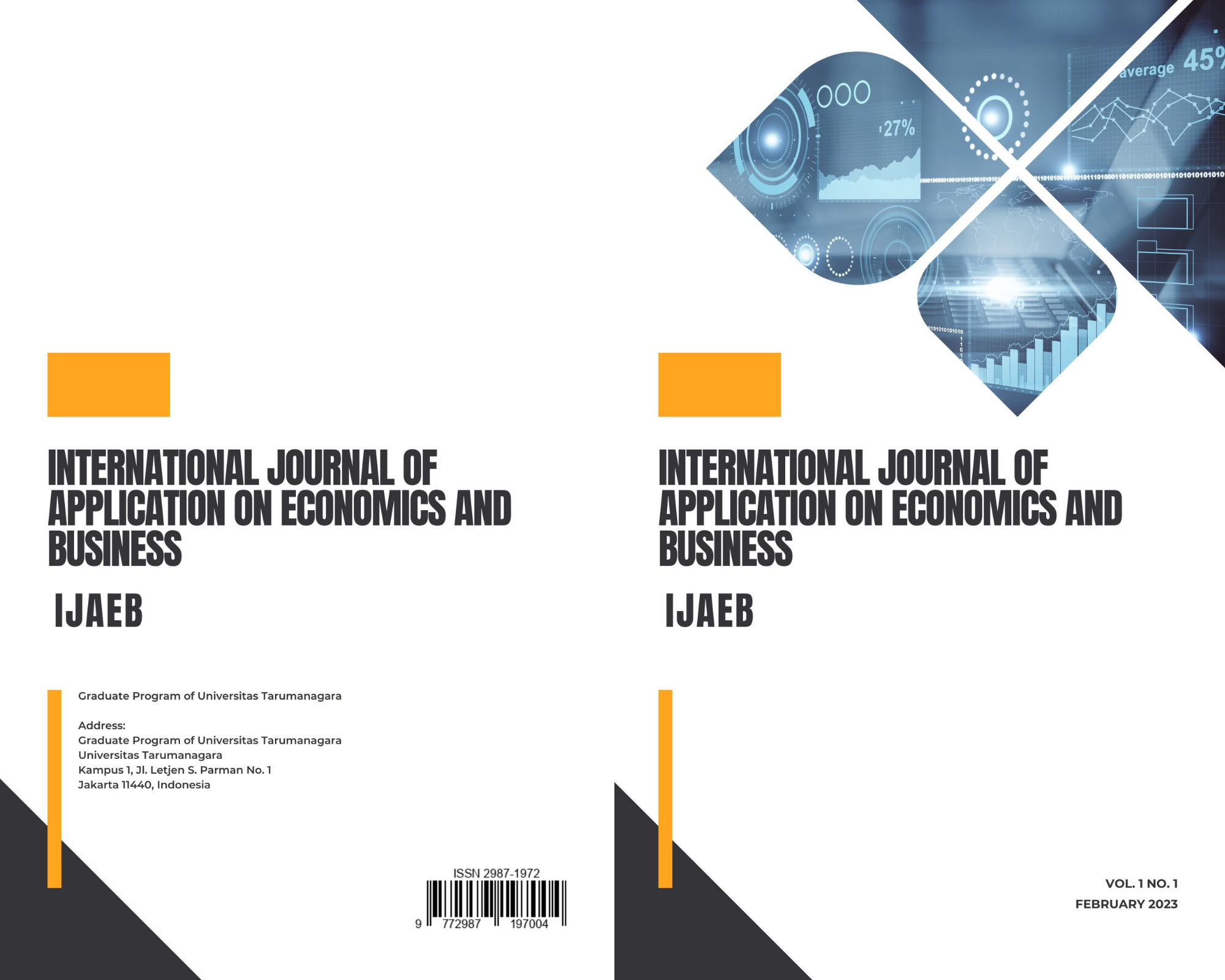The Effect of Social Influence, Perceived Usefulness, and Financial Risk on Intention in Using OVO
Main Article Content
Abstract
The purpose of this study was to examine the effect of social influence, perceived usefulness and financial risk, as well as age-moderated social influence on the behavioural intention in using OVO from Universitas Tarumanagara students. This study uses data collected from 68 respondents. The method used in this study is cross-sectional with a sample selection technique using purposive sampling. The data in this study were obtained by distributing online questionnaires which were then processed using SmartPLS software version 3.3.3. The results of this study are that social influence and perceived usefulness have a positive influence on behavioural intention in using OVO, and age successfully moderates social influence on behavioural intention in using OVO. Meanwhile, financial risk has no effect on behavioural intention in using OVO.
Article Details

This work is licensed under a Creative Commons Attribution-NonCommercial-ShareAlike 4.0 International License.
This journal provides immediate open access to its content on the principle that making research freely available to the public supports a greater global exchange of knowledge.
IJAEB by Graduate Program of Universitas Tarumanagara is licensed under a Creative Commons Attribution-NonCommercial-ShareAlike 4.0 International License.. Permissions beyond the scope of this license may be available at https://journal.untar.ac.id/index.php/ijaeb
References
Helmi, “Kuartal IV 2020, Ekonomi Indonesia Masih Kontraksi -2,07%,” 2021. https://bisnisnews.id/detail/berita/kuartal-iv-2020-ekonomi-indonesia-masih-kontraksi-207 (Accessed in September 16, 2021)
S. Ferrika, “Riset UBS Global ungkap OVO kuasai 30% transaksi pembayaran digital di Indonesia” 2021. https://keuangan.kontan.co.id/news/riset-ubs-global-ungkap-OVO-kuasai-30-transaksi-pembayaran-digital-di-indonesia (accessed Sep. 16, 2021).
Jakpat, “Indonesia Digital Wallet Trend 2020,” 2021.
T. Oliveira, M. Thomas, G. Baptista, and F. Campos, “Mobile payment: Understanding the determinants of customer adoption and intention to recommend the technology,” Computers in Human Behavior, vol. 61, pp. 404–414, Aug. 2016, doi: 10.1016/J.CHB.2016.03.030.
V. Sangwan, Harshita, P. Prakash, and S. Singh, “Financial technology: a review of extant literature,” Studies in Economics and Finance, vol. 37, no. 1. Emerald Group Holdings Ltd., pp. 71–88, Feb. 24, 2020. doi: 10.1108/SEF-07-2019-0270.
“Peraturan Bank Indonesia Nomor 20/6/PBI/2018 tentang Uang Elektronik,” 2021. https://www. bi.go.id/id/publikasi/peraturan/Pages/PBI-200618.aspx (accessed Sep. 17, 2021).
H. A. Widyanto, K. A. Kusumawardani, and A. Septyawanda, “Encouraging Behavioral Intention to Use Mobile Payment: An Extension of Utaut2,” Jurnal Muara Ilmu Ekonomi dan Bisnis, vol. 4, no. 1, pp. 87–97, Apr. 2020, doi: 10.24912/JMIEB.V4I1.7584.
S. Shin and W.-J. Lee, “Factors affecting user acceptance for NFC mobile wallets in the U.S. and Korea,” Innovation & Management Review, vol. ahead-of-print, no. ahead-of-print, Jun. 2021, doi: 10.1108/inmr-02-2020-0018
Sukis Warningsih and Nuryasman MN, “Determining Factors of Digital Wallet Usage,” Jurnal Manajemen, vol. 25, no. 2, p. 271, Jun. 2021, doi: 10.24912/jm.v25i2.740
I. Almarashdeh and M. K. Alsmadi, “How to make them use it? Citizens’ acceptance of M-government,” Applied Computing and Informatics, vol. 13, no. 2, pp. 194–199, Jul. 2017, doi: 10.1016/J.ACI.2017.04.001.



